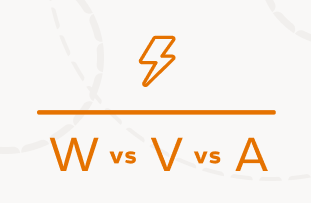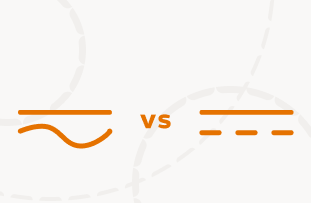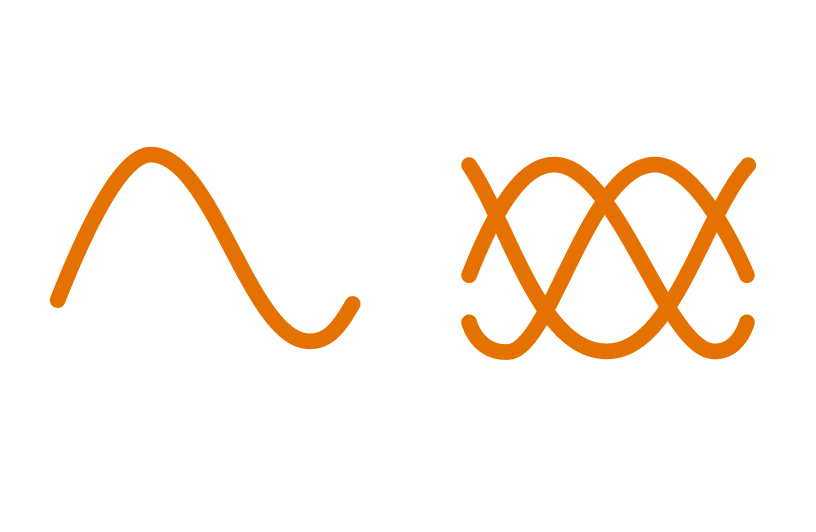
Do you know what kind of electrical wiring you have at home? Do you know if it is a single-phase or three-phase installation, and what the difference is between the two?
Read this guide to discover what a single-phase or three-phase wiring installation is, learn about their differences and find out which is better for you.
What is a single-phase wiring installation?
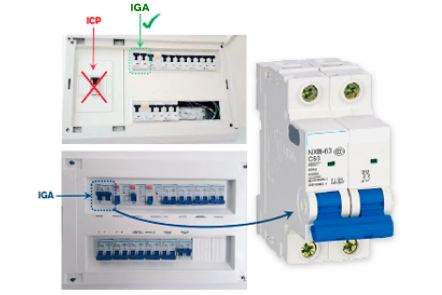
Single-phase wiring is the most common in private homes.
The easiest way to recognise this type of installation is by looking at the type of General Circuit Breaker (GCB) you have in the fuse box of your home or business. The GCB is usually located on the left of the fuse box or the top-left if there are several rows. Do not confuse this with the PCS or Power Control Switch that some properties still have, which is located on a separate sealable panel.
If the GCB is like the one shown in the picture, a device with two parts, then you have a single-phase installation.
What is a single-phase wiring installation?
- A single-phase wiring installation has one single alternating current circuit to which all your electrical appliances are connected.
- It has 230 volts and supports a maximum intensity of 63 amperes.
- The maximum power for this type of installation is 15 kW.
- The size of the property has no impact. However the electrical power you need does, because the combined power of all receptors and the power level you have contracted must be lower than the maximum power level supported by the single-phase wiring installation.
What is a three-phase wiring installation?
Three-phase electricity installations are the most common for the general services in a building, company or commercial or industrial premises, although they can also be found in some private properties with a large installed capacity.
This type of installation is also very easy to recognise by sight when looking at the General Circuit Breaker (GCB) in your fuse box because it will be a device with four parts like the one shown in the image below:
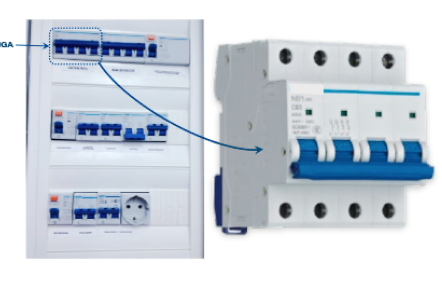
What defines a three-phase installation?
- In this case, the installation has three phases. This means there are three separate alternating current circuits to which the various equipment and devices are connected (except the equipment requiring a lot of power, which is connected to all three phases simultaneously).
- It has 230 volts between Phase and Neutral (on each one of the three current circuits) and 400 volts between Phases (for connecting the three-phase equipment requiring a lot of power). Depending on each specific installation, it may support a maximum intensity of up to 630 amperes.
- This is the type of installation that any supply above 15 kW must have, up to a maximum of 400 kW.
- Although the three current circuits are relatively independent, in order to optimise use of the installation, the power used by the various equipment connected to each one of the phases or circuits must be distributed as equally as possible between the three phases or circuits.

Did you know…?
Electrical appliances are also single-phase or three-phase.
The vast majority of the electrical appliances we use are single-phase and should therefore only be connected to one circuit. This is why most private homes have a single-phase wiring installation. However, in some cases it is possible that your installation will have one or more three-phase devices (heating, pumping, lift, etc.), which will require you to have three-phase electrical wiring.
The difference between single-phase and three-phase devices generally lies in the motor. You can check what kind of equipment you have by reading the specifications. If its nominal voltage (Un) is between 220 V and 230 V, it is single-phase (the most common in private homes and businesses). However, if it is 380 V or 400 V, it is three-phase (more common in industry).
One fact to bear in mind that you will surely find interesting: single-phase electrical appliances and equipment consume less than three-phase equipment.
Do I have the right wiring installation?
Now that you know the difference between the two, you might be wondering whether you have the right installation for what you need.
To answer that question, you need to calculate the installed capacity of your house:
- If you use no more than 15 kW, then a single-phase installation is perfect. As you read before, this is what most private homes already have.
- However, if 15 kW is not enough, then you need a three-phase installation.
If you live in a country house or far from the nearest distribution point from the electricity grid, we also recommend having a three-phase installation.



